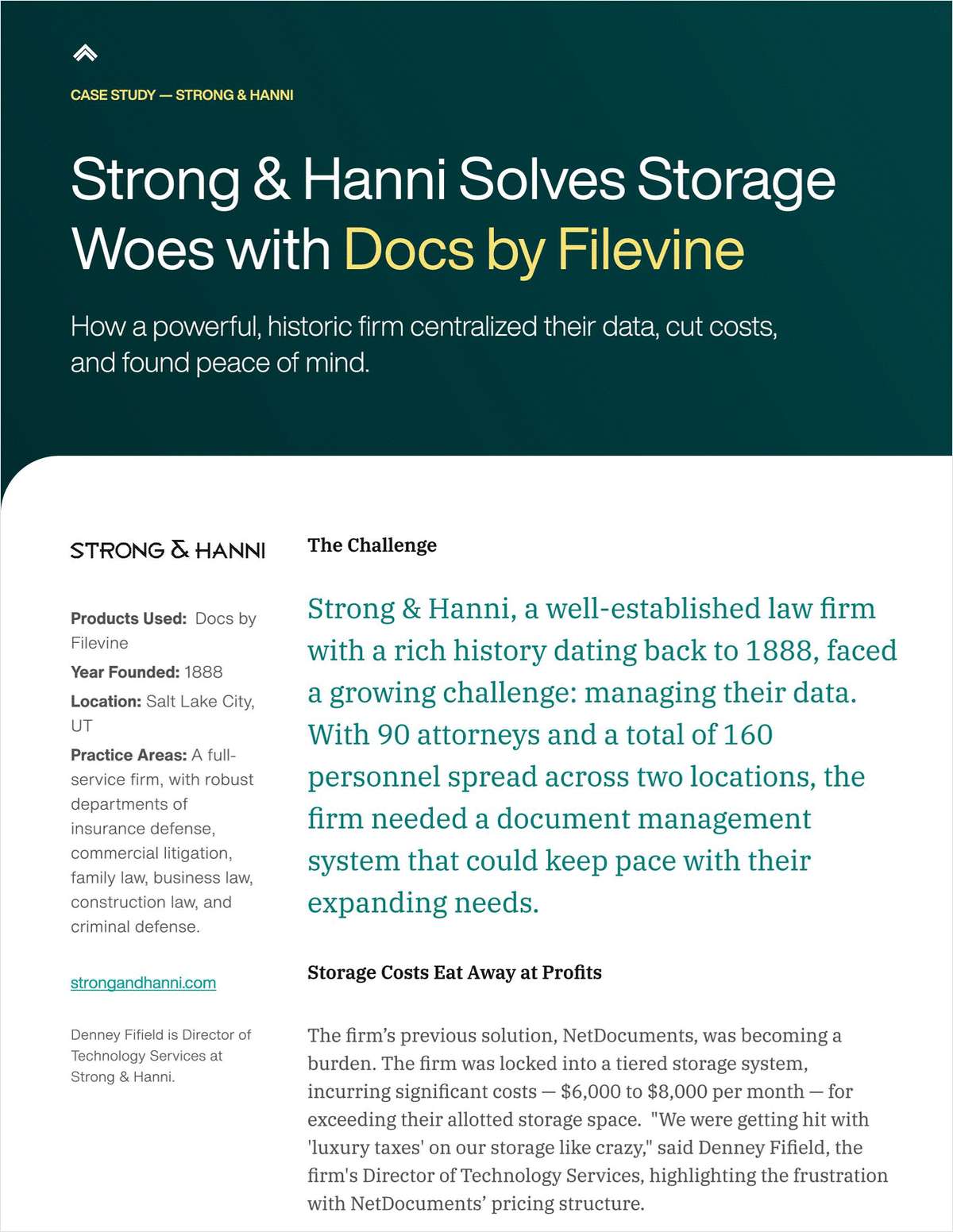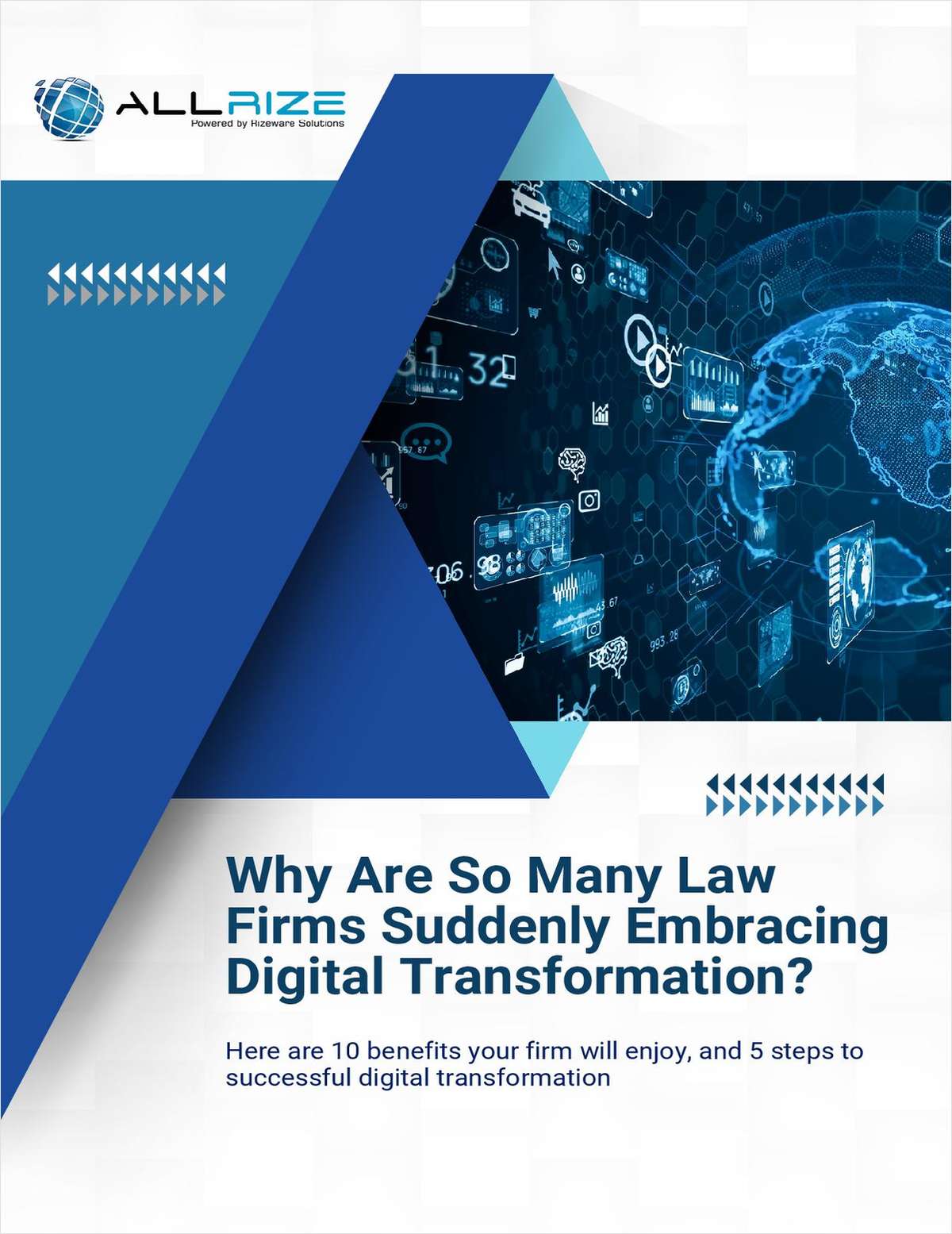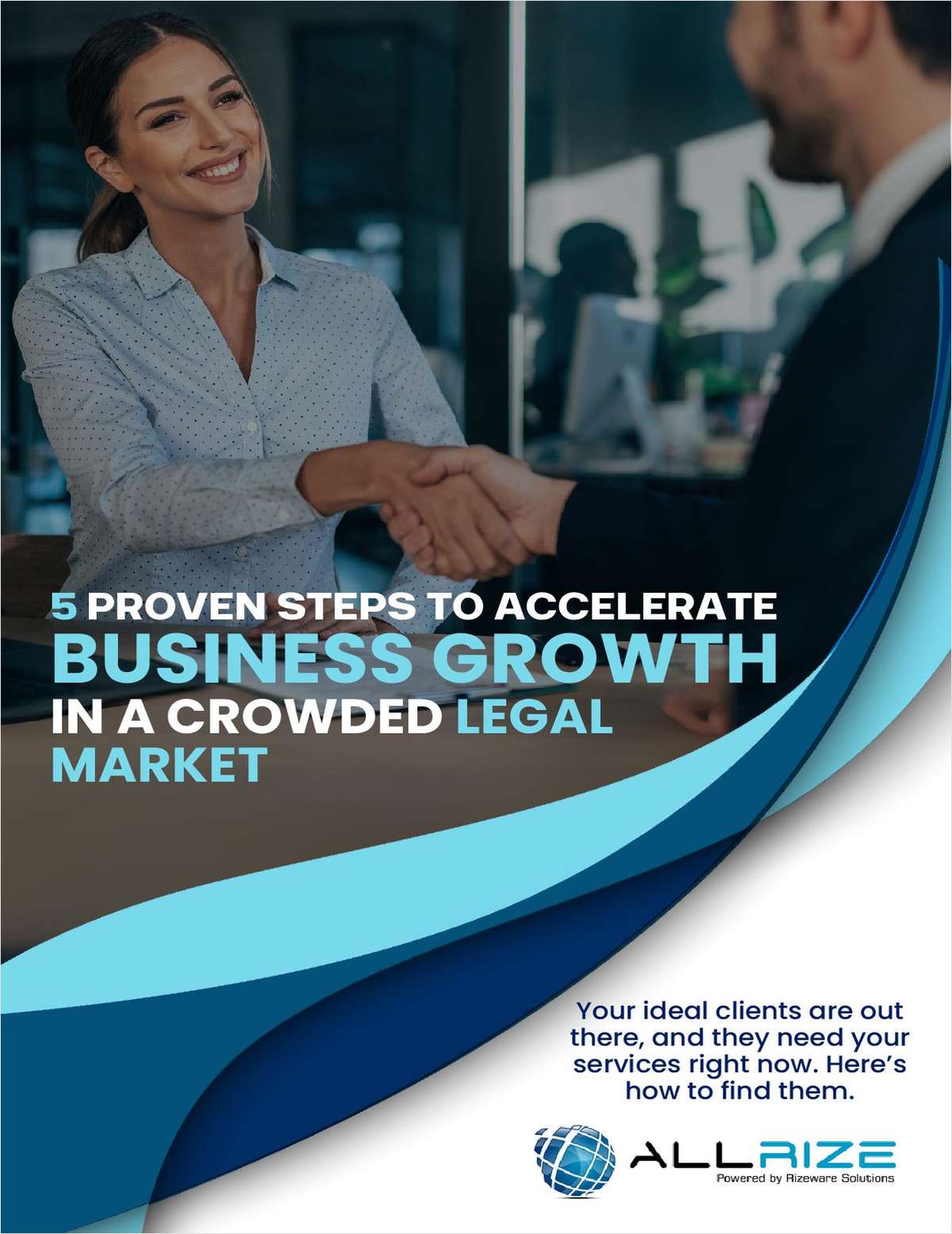The Law Firm Disrupted: A Big Law Leader Sees Tech as a Threat
Winston & Strawn chairman Thomas Fitzgerald has a lot to say about the degree to which his firm has already stratified; the threat technology poses to the future of the Big Law business model; and how to respond to the competition created by alternative legal service providers.
November 30, 2017 at 09:00 PM
7 minute read
The original version of this story was published on Law.com
|
➤➤ Receive this weekly email briefing straight to your in-box as part of your American Lawyer or Law.com All-Access subscription. Click here to sign-up. Not a subscriber? Sign up here for a free trial.
Hello, and welcome to the second edition of The Law Firm Disrupted. I'm Law.com reporter Roy Strom, and this weekly email briefing attempts to make sense of the biggest challenges and opportunities facing law firms today. Let me know what you think at [email protected].

|
A Big Law Chair Looks Into the Future
In this month's edition of The American Lawyer, I have a feature story on Winston & Strawn's historic 2017. The firm added more lateral partners than almost any other Am Law 100 firm; won a huge contingent fee settlement; and will grow gross revenue by nearly 20 percent.
The story didn't have room for it, but Winston & Strawn chairman Thomas Fitzgeraldhas a lot to say about the degree to which his firm has already stratified; the threat technology poses to the future of the Big Law business model; and how to respond to the competition created by alternative legal service providers.
On technology: “The biggest threat to our industry is technology. I don't think it's today. And I don't know whether it can really be a complete antidote for the issue. But clearly technology is going to continue to allow us to do things less expensively, quicker and that's the way it is. … There's no doubt it's coming. And I don't think that's a bad thing. That is what has happened to many industries, and we're no different. I think technology is going to change our business.”
Fitzgerald added: “What [lawyers] are is reservoirs of knowledge and information. We read a problem. We know what area of the law it affects. We get that area of the law, and we analyze it; compare it to the facts; and we come out with a decision. There is a lot of innovation and mental strain to get to the right place and write it correctly and be persuasive. But I don't think it's impossible [for technology to do eventually]. I don't think they're near where they need to be. I think it's sort of at this point a joke. But it will get better.”
On alternative legal service providers: “There are a number of organizations that try to do the lower-end work that we used to do, and that's never coming back. And that's OK. How do you adjust? I think you hire to do the other parts of the job and to have skills that are important to clients at other levels. That's what we do.”
On the stratification of the Am Law 50: Winston & Strawn last year underwent an intensive strategic planning session that included defining its own place in the law firm market. Fitzgerald said it determined there were three distinct types of firms within even the Am Law 50. The first is the Wall Street firms; the second is the global behemoths such as Baker McKenzie, DLA Piper and K&L Gates; and third is the largest group: Those firms with offices in major cities who represent large corporate clients on their biggest matters. Winston & Strawn decided it was part of the third group, but that it had to bring in more revenue in order to compete and take advantage of its professional talent and technology infrastructure.
|
A Compensation Dilemma
If you read the first installment of this briefing, you'll remember that one theses we are testing is this: “The large law firm model, in particular how it compensates partners, will be tested as revenue becomes disassociated from an individual's time, either because of flat fees, budgets or technology-based legal products.”
My advice was for law firms to figure out ways to compensate lawyers based on the value they add rather than the hours they bill.
With this in mind, I called up a partner from an Am Law 100 firm who recently announced a successful technology-based legal product that gets clients answers to their questions through a web-based interview process.
The product is a great example of the new types of solutions that innovative law firms should be developing. It combines regulatory research done by a lower-cost third party with an expert system from Neota Logic Inc.
The partner's firm declined to let him speak with me on the record. But without sharing the name of that partner or his firm, there are still some notable takeaways I can share from the conversation.
First, the partner said the project required taking some personal compensation risk on his behalf. He said few, if any, firms in the U.S. had found good solutions to integrating “the economics of innovation” into the traditional billable hour compensation model.
“Until they do, innovation at most firms will continue to place at least some, and potentially significant, financial burdens on the attorneys who are seen as having otherwise billable hours diverted by building new solutions,” the partner said.
I spoke with Eric Seeger, a principal at legal consultancy Altman Weil Inc., about how firms compensate partners for projects that require an upfront investment of time.
Seeger said a good model for firms to use would be to protect the lawyer's compensation as he or she makes the upfront investment and offers a scale of income tied to the revenue a project brings in.
“Otherwise, partners are going to just continue to bill hours as they always have and it makes real innovation very hard to achieve in a law firm environment,” Seeger said.
Ultimately, there is risk involved in these projects. Firms truly focused on changing their business models should be more willing to shoulder that risk across their partnership rather than levying the burden on a small group of individuals.
If you're enjoying The Law Firm Disrupted, check out What's Next by Ben Hancock, a weekly email briefing on law, technology and the future. Sign up here.
|
Roy's Reading Corner
➤ On the barriers to tech adoption: Seyfarth Shaw chairman emeritus Stephen Poorwrites in Bloomberg Big Law Business that it is not just compensation structures that are a hindrance to the adoption of efficiency-focused technology at law firms. Other barriers include pricing structures; lawyer resistance; lack of understanding these products; and organizational structures that require broad consent.
➤ On overcoming those barriers: Reed Smith is considering converting its London office into an “alternative business structure” that under UK laws would allow for ownership outside of its lawyer ranks. As my colleague across the pond Rose Walker writes, the conversion would open up “the possibility of joint ventures and profit-sharing arrangements with non-lawyer businesses.” The firm wants to work more closely with companies in the consulting and technology sphere.
➤ On scrapping lockstep compensation: Law firm “innovation” used to be simpler. Take, for instance, the idea of paying high-performers more money than their peers. Am Law 100 firms like Kirkland & Ellis have used that strategy to gain a leg-up on traditional lockstep firms. To be fair, the lockstep model has held up, too. But Freshfields in the U.K. has had just about enough of it. The firm is increasing its top pay and lowering its bottom pay, writes my colleague James Booth. As one unnamed partner told James: “You only really change things that you care passionately about when you feel vulnerable.” Never waste a good crisis!
That's it for this week! Thanks for reading, and please share your thoughts on how the law firm market is changing: [email protected].
This content has been archived. It is available through our partners, LexisNexis® and Bloomberg Law.
To view this content, please continue to their sites.
Not a Lexis Subscriber?
Subscribe Now
Not a Bloomberg Law Subscriber?
Subscribe Now
NOT FOR REPRINT
© 2024 ALM Global, LLC, All Rights Reserved. Request academic re-use from www.copyright.com. All other uses, submit a request to [email protected]. For more information visit Asset & Logo Licensing.
You Might Like
View All

The Law Firm Disrupted: How Predictable Can Litigation Get and How Fast?
8 minute readTrending Stories
- 1The Law Firm Disrupted: Playing the Talent Game to Win
- 2A&O Shearman Adopts 3-Level Lockstep Pay Model Amid Shift to All-Equity Partnership
- 3Preparing Your Law Firm for 2025: Smart Ways to Embrace AI & Other Technologies
- 4BD Settles Thousands of Bard Hernia Mesh Lawsuits
- 5A RICO Surge Is Underway: Here's How the Allstate Push Might Play Out
Featured Firms
Law Offices of Gary Martin Hays & Associates, P.C.
(470) 294-1674
Law Offices of Mark E. Salomone
(857) 444-6468
Smith & Hassler
(713) 739-1250












